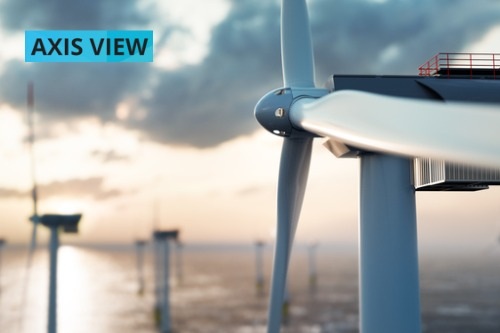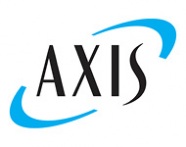AXIS VIEW - Technology and claims issues in renewables

Authored by Dan Stevens, Risk Engineer, Renewable Energy
Whilst the impact of COVID-19 was the major story for much of the renewable energy industry last year, technological developments within the industry have also told their own story. Generally, it’s clear that the renewables industry is making significant advancements in the delivery and efficacy of its technology, but there are still several areas of concern.
Whilst their ability to stabilise to the grid and allow more renewable generation is a success story, battery energy storage systems (BESS) continued to have issues with fires, most recently in the UK. A lack of universally adopted guidelines on fire safety for Lithium-Ion BESS appears to be a major issue, requiring attention from all parties. Whilst there is always a learning curve with new technology, BESS developers would benefit from more agreement around exactly what best practice is.
In solar, we saw another year where the key factor in claims was weather. The good news is that OEMs are responding to this challenge. Developments in tracker technology for solar farms built, in areas at risk of hail and windstorms are promising. This includes using weather forecasting software to track hailstorms before they hit and tilting the panels vertically beforehand, to limit the impact of the hail stones (stow mode). To limit the risk of high winds tearing off solar panels, technology providers are taking different approaches, some software driven, some mechanical. Whilst these solutions will not eliminate risk it is a step in the right direction. Time will tell how effective they are.
Offshore led the way last year in wind technology. 2020 saw the announcement of the first 14MW wind turbine (GE Haliade-X), and its 13 MW predecessor appears to have passed its certification trials with flying colours. As we begin 2021, Vesta has just announced a 15MW model. This continues the trend of increasing turbine size, which lowers the levelised cost of energy associated with offshore wind power.
Meanwhile, the fledgling floating offshore wind (FOW) industry is setting its sights on bigger and bigger projects, with a wide variety of concepts. FOW is a promising solution for areas where the water is too deep for traditional 'fixed foundation' wind turbines (e.g. California, Japan and parts of Europe). It brings with it an entirely new set of challenges that require technical innovation, from detachable anchoring systems to floating power cables.
For the industry to move forward and continue to lower costs, project sponsors and OEMs must share information with the wider industry to explain how these innovations will overcome these challenges and show proof of concept. For those of us in the insurance industry, this information will allow us to make decisions based on relevant information and manage risk accordingly.
Renewable engery claims - Authored by David Osborne, Claims Manager, Renewable Energy
As growth in the renewable energy industry accelerates, we are seeing an increase in the size and the frequency of claims.
Whilst there are a variety of issues, the principal peril category for solar is weather, including secondary perils such as hail and storm damage to panels. There are also several solar locations around the world experiencing increased dry weather, leading to higher fire/wildfire activity. Increasingly, these weather-related perils are being attributed to the effects of climate change and, if this continues, we should expect that such claims will become more frequent. Other common solar losses include electrical issues involving transformers and inverters. Causes can include installation issues, defects, external system surges/grid issues, wildlife and water ingress.
Onshore wind claims and their causes are fairly consistent each year. Blade damage occurs frequently and whether this is caused by external perils (e.g. lightning) or due to other impacts related to age or maintenance, blades are becoming increasingly expensive to repair. This is due to their physical size and related logistical impact (e.g. cranes), as well as market demands. Gearbox and other mechanical failures are also frequent, with main bearing damage incidents occurring occasionally. Each of these can potentially indicate other issues within the nacelle or turbine, leading to further claims. Turbine fires and collapses are quite rare but happen from time to time and are significant and costly claims. There appears to be a slight increase in these losses recently.
Other claims we see relate to installation issues or damage sustained to equipment during construction. This often involves power cables, but other incidents include collision damage caused by a crane or other onsite heavy machinery. Transit and storage type claims also arise during the construction phase. Contractor error and turbine defects are common causes.
Offshore wind claims are also very consistent. The most common and complex losses usually involve cable damage, involving installation or connection issues. We see failures of cables joints and the cables themselves due to water ingress. We also see a number of offshore foundation claims, generally during construction, which can be costly. In Offshore claims the cost driver is often due to vessel availability and waiting on weather for mobilisation, which increases the business interruption period and related expense.
Looking at the issue overall, unless renewable energy asset owners and operators fully appreciate and consider the changing nature of the industry, claims will become more expensive and in the case of weather more frequent. Larger wind turbines necessitate larger cranes and vessels, which are often in high demand, raising costs. As secondary perils continue to rise, project design must consider the full lifespan of the project and the possible change in weather conditions.
As we move forward, there several things that can be done both to decrease the number of claims and improve communication when claims are made:
- Increased sharing of information from OEMs and developers to facilitate a better understanding of what should and shouldn’t happen
- Implementation and operation of monitoring and warning systems
- Better access to spares/cranes/vessels
- Better understanding of an insured’s responsibilities in relation to the claims process
- Making sure that contractors and third parties can be held accountable for their actions and have the required liability insurance in place
- Future proofing projects against possible future weather
If you would like to talk to Dan Stevens or David Osborne to find out more about the AXIS renewables value proposition, CLICK HERE, leave a message and youTalk-insurance will pass your enquiry on
About AXIS
Specialty Solutions, Elevated
In a world that never stands still – where the nature of risk is constantly evolving and the needs of your customers are continually changing – you need a partner that turns challenges into possibilities and possibilities into opportunities.
A specialty insurer and reinsurer that elevates beyond the standard solutions. We help customers pursue their ambitions and explore new pathways through tailored products and services, on a global scale. A partner that you can trust – and who is with you for the journey.

